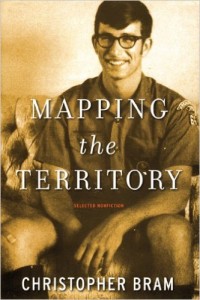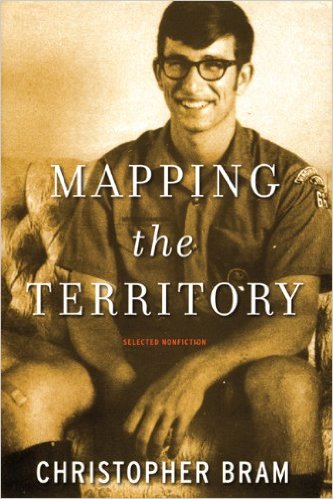 Mapping the Territory: Selected Nonfiction
Mapping the Territory: Selected Nonfiction
by Christopher Bram
Alyson Books. 258 pages, $23.95
THIS DIVERSE COLLECTION of essays by the author of the novel Gods and Monsters stretches over a remarkable variety of topics that range from AIDS fiction to the sexuality of Henry James. While most of the essays touch on some aspect of “the gay experience,” there are some that do so only tangentially.
An example of the latter case is “Little Green Buddies,” which examines the Frog and Toad stories by Arthur Lobel and the friendship between the two title characters. Bram writes that “the intensity of their attentions and worries certainly point in a homosexual direction,” but declines to answer the question of whether they are gay. Instead, he explores how Frog and Toad’s relationship mirrors childhood friendships and how they may serve as models for relationships as one grows older. Bram shows how children’s stories can help adults to navigate their complex world.
Other entries are previously published book reviews, including one that considers Larry Kramer’s novel Faggots. In this essay, Bram looks at the controversy the novel generated when it was first published in 1978, and is still generating today. He’s careful to provide both sides of each issue, such as the claim that the graphic sex scenes depicted in Faggots create a negative image of homosexuality. Ultimately, Bram contends that the novel is so troubling because it speaks to the conflict between sex and love that’s at the heart of gay life. The novel does not provide an answer, but it seems to cast doubt on both possibilities.
The essays dealing with the state of literature, particularly gay literature, are especially fascinating. “Mapping the Territory,” originally written for a book of author photographs, briefly discusses the modern history of gay literature, beginning with the secretive passing of The Picture of Dorian Gray among certain readers, eventually moving to the vast variety of gay fiction and drama being published today. Bram enumerates six main traditions in which gay authors are currently working: avant-garde, Gothic, high art, emotional realism, comic realism, and fabulism, assigning several well-known writers to each category. Of course, he acknowledges that many writers use multiple traditions or move between them in different works, but this heuristic provides a good way to look at the diversity of the gay literary world and how far it has come.
A few of these essays are surprisingly personal. “Slow Learners” for instance, describes Bram’s coming out to his close friends in college as well as his first tentative steps toward a reciprocal relationship. While he fell hard for several young men, his first sexual experience was with a woman, to the confusion and frustration of both parties. In fact, he would not sleep with a man until after all of his friends had graduated. He writes movingly of his complicated friendship with Hal, who may or may not be attracted either to Bram or to their mutual friend Anna. Bram eventually realizes that “heterosexuality is not always as easy as it looks,” that Hal was “as slow in coming to terms with his desires as I’d been with mine.” He demonstrates that friendship can be just as complex as love, and that physical intimacy does not always follow one’s sexual preference.
Mapping the Territory is a penetrating look inside the mind and personality of a thoughtful, careful writer. Bram demonstrates that he can write beautifully crafted nonfiction as well as novels. With humor and intelligence, he relates what it means to be a gay author and reader in a world that all too frequently likes to announce that there is no longer a need for gay literature.
Charles Green is a writer based in Annapolis, Maryland.






